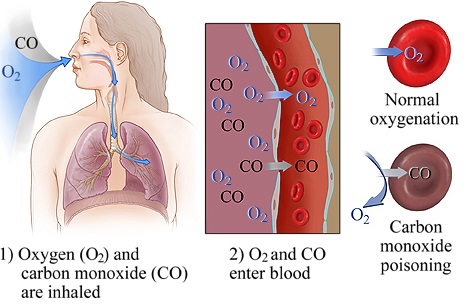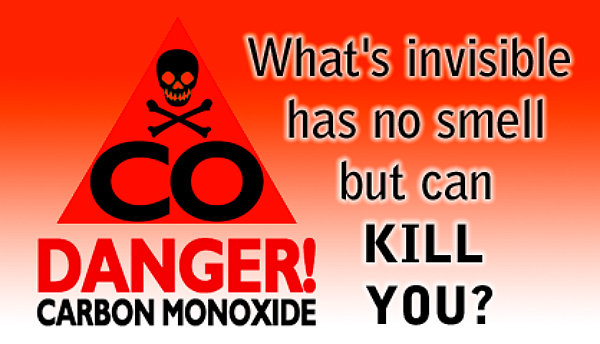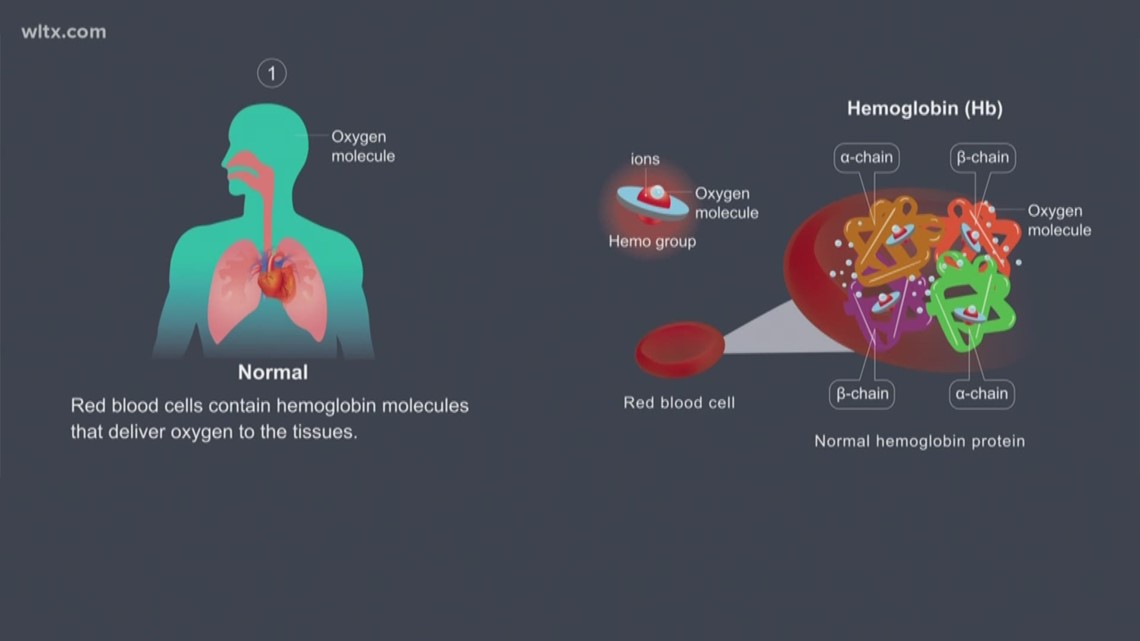

Typically, the longer an individual is exposed to CO, the more severe the symptoms will become.ĬO poisoning can cause severe brain damage, and it may cause a progressive worsening of memory and concentration. Short-term exposure to CO can also cause death in severe circumstances. Short-term effects of CO exposure can include: Short term effectsįollowing CO exposure, a person may notice that something is wrong, but they may not know where the symptoms are coming from. Because CO more easily occupies the space where oxygen would bind, its presence means that less oxygen can enter the hemoglobin.Īs a result, parts of the body will experience oxygen starvation, and the affected parts may die. HBOT may be necessary for people experiencing a loss or reduction of oxygen supply, a person in a coma, individuals with a history of loss of consciousness, those with an unusual ECG reading or reduced brain activity, and those who are pregnant.Īccording to a 2012 study, CO binds to hemoglobin over 220% more easily than oxygen does. This treatment floods the blood with pure oxygen to compensate for the lack of oxygen caused by CO gas poisoning.
#High carbon monoxide symptoms professional
If a medical professional suspects nerve damage or if exposure to CO has been extensive, they may recommend hyperbaric oxygen therapy (HBOT). Learn more about hemoglobin and hemoglobin levels here. This can speed up the production of oxygen-carrying proteins in red blood cells, known as oxyhemoglobin, which helps to replace CO-carrying hemoglobin, called carboxyhemoglobin. Hospital treatments include the delivery of 100% oxygen through a mask. If a person’s symptoms are severe, they may require hospitalization. A medical professional will be able to assess symptoms accurately. doi:10.1136/bmjopen-2015-008909.The first step is to move away from the possible CO gas source and contact medical services. Is hypercapnia associated with poor prognosis in chronic obstructive pulmonary disease? A long-term follow-up cohort study. Yang H, Xiang P, Zhang E, Guo W, Shi Y, Zhang S, et al. Intensive Care Med Exp. 2019 Jul 25 7(Suppl 1):39. The role of hypercapnia in acute respiratory failure. Morales-Quinteros L, Camprubí-Rimblas M, Bringué J, Bos LD, Schultz MJ, Artigas A. Hypercapnia-induced cerebral hyperperfusion: an underrecognized clinical entity. Pollock JM, Deibler AR, Whitlow CT, et al. High-flow nasal cannula versus conventional oxygen therapy in acute COPD exacerbation with mild hypercapnia: a multicenter randomized controlled trial. Xia J, Gu S, Lei W, Zhang J, Wei H, Liu C, et al. Face mask and hypercapnia in patients with COPD in COVID-19 pandemic…is it real? Chest. Carbon dioxide increases with face masks but remains below short-term NIOSH limits. Rhee MSM, Lindquist CD, Silvestrini MT, Chan AC, Ong JJY, Sharma VK. National Heart, Lung, and Blood Institute. Dyspnea in amyotrophic lateral sclerosis: the Dyspnea-ALS-Scale (DALS-15) essentially contributes to the diagnosis of respiratory impairment. Risk factors of chronic obstructive pulmonary disease exacerbations. Hogea SP, Tudorache E, Fildan AP, Fira-Mladinescu O, Marc M, Oancea C. Comorbidities and subgroups of patients surviving severe acute hypercapnic respiratory failure in the intensive care unit. StatPearls.Īdler D, Pépin JL, Dupuis-Lozeron E, et al. Patel S, Miao JH, Yetiskul E, Anokhin A, Majmundar SH. Caffeine Use in the Anesthetic Management of a Patient With Congenital Central Hypoventilation. How the lungs work.ĭavis JS, Allais L, Abdallah C.


National Heart, Lung and Blood Institute. It can vary greatly from one patient to another but can include a mix of breathing exercises, physical exercises, and diet and nutrition consultations. Pulmonary rehab is another treatment option.You must wear a device that resembles an over-the-shoulder purse or backpack with a tube (cannula) that delivers oxygen into your nose. Oxygen therapy gives you freedom of movement while you're being treated for hypercapnia.The mask is connected to a machine that delivers gentle air pressure and oxygen from a flow generator, though you can still breathe on your own. A tightly fitted mask is placed over your face or nose. Noninvasive ventilation provides breathing support through the upper airways.Mechanical ventilation involves the use of a mechanical ventilator that takes over the act of breathing for you.You may need this type of respiratory assistance temporarily while a severe medical illness is being treated. You are unable to breathe or speak while you are intubated. Intubation requires that an endotracheal tube be placed in your mouth and down into your airway.


 0 kommentar(er)
0 kommentar(er)
